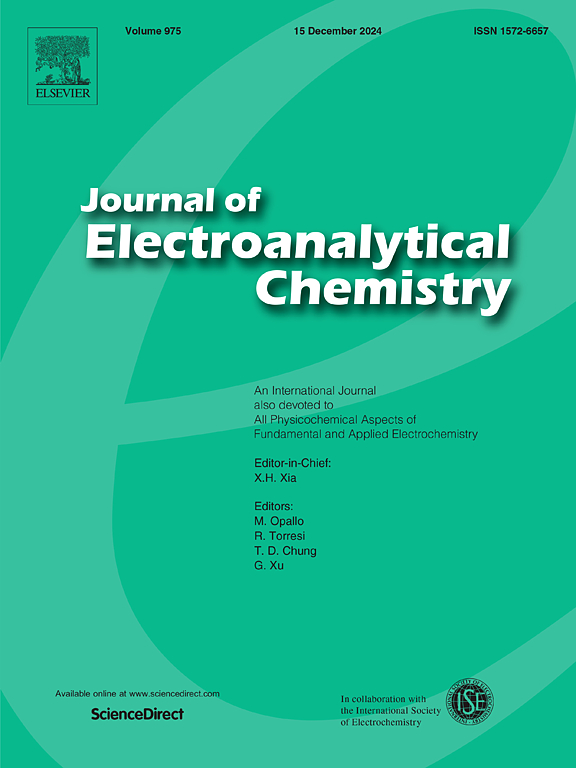Construction of Fe doped Co4S3/Ni3S2 composite for efficient alkaline freshwater and seawater oxidation
IF 4.1
3区 化学
Q1 CHEMISTRY, ANALYTICAL
引用次数: 0
Abstract
One of the most important and fundamental challenges for the production of hydrogen through seawater electrolysis is constructing strong and high-activity oxygen evolution reaction (OER) catalysts. In this paper, Fe-doped Co4S3/Ni3S2 (Fe-Co4S3/Ni3S2) composite was prepared by a one-step hydrothermal method. The doped Fe in Co4S3/Ni3S2 composite modifies the electronic structure and promotes electron transfer, leading to improved OER performance in alkaline freshwater and seawater. At 100 mA/cm−2, Fe-Co4S3/Ni3S2 exhibits low overpotentials of 329 and 361 mV in alkaline freshwater and seawater, respectively. In particular, the overpotential in alkaline freshwater is reduced by 85 mV compared to the Co4S3/Ni3S2, and 112 and 145 mV compared to single-phase Co4S3 and Ni3S2. Additionally, the Fe-Co4S3/Ni3S2 can operate steadily at 100 mA cm−2 for at least 100 h in alkaline seawater. The current study provides a facile method for preparation of efficient OER catalysts of sulfides by Fe doping in composite.

求助全文
约1分钟内获得全文
求助全文
来源期刊
CiteScore
7.80
自引率
6.70%
发文量
912
审稿时长
2.4 months
期刊介绍:
The Journal of Electroanalytical Chemistry is the foremost international journal devoted to the interdisciplinary subject of electrochemistry in all its aspects, theoretical as well as applied.
Electrochemistry is a wide ranging area that is in a state of continuous evolution. Rather than compiling a long list of topics covered by the Journal, the editors would like to draw particular attention to the key issues of novelty, topicality and quality. Papers should present new and interesting electrochemical science in a way that is accessible to the reader. The presentation and discussion should be at a level that is consistent with the international status of the Journal. Reports describing the application of well-established techniques to problems that are essentially technical will not be accepted. Similarly, papers that report observations but fail to provide adequate interpretation will be rejected by the Editors. Papers dealing with technical electrochemistry should be submitted to other specialist journals unless the authors can show that their work provides substantially new insights into electrochemical processes.

 求助内容:
求助内容: 应助结果提醒方式:
应助结果提醒方式:


